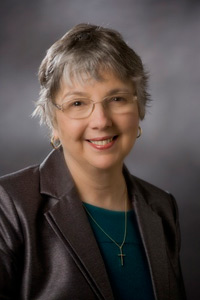 Kathleen Pooler is a writer and a retired Family Nurse Practitioner who is working on a memoir about how the power of hope through her faith in God has helped her to transform, heal and transcend life’s obstacles and disappointments: divorce, single parenting, loving and letting go of an alcoholic son, cancer and heart failure to live a life of joy and contentment. She believes that hope matters and that we are all strengthened and enlightened when we share our stories.
Pam to Kathleen: What unique contribution to faith do you see women making today? Kathleen to Pam: In my experience, women are the nurturers in the family and are often the ones to plant the seeds of faith. My Great-Grandma Rose did that for me. Widowed at the age of thirty-three with seven children to support, she lived in poverty. Somehow, she made do with her strong belief that God would provide. As a Roman Catholic, I have a devotion to The Blessed Mother that was instilled in me by Grandma Rose. She was always praying the Rosary and asking me, “Katarina (my name in Italian) you wanna be a nun or you wanna get-a married”. It made me nervous as I figured she had some pull but my Mom reassured me that if God wanted me to be a nun, I would feel the call. I was relieved as I knew I could serve God in other ways. But the vision of that tiny woman with her unwavering faith came to me in whispers and glimpses throughout my entire life as I faced my own challenges. She is still with me when I pray the daily Rosary. Faith is a gift given to me and nurtured in my childhood by Grandma Rose.
Pam to Kathleen: How has your faith influenced you in your career? Kathleen to Pam: I felt called by God to go into nursing when I was thirteen years old. I was sitting in my eighth grade classroom study hall, reading a book, Anne Snow, Mountain Nurse. My heart started pounding and I had a feeling of excitement as I read about Anne Snow riding on horseback in the hills of Virginia to care for poor families as a Community Health Nurse. From that moment, I knew what I wanted to do. Of course, I didn’t realize it was a calling until many years later. At the time, I just knew it felt right. My faith in God has guided me throughout my entire career as a nurse and nurse practitioner. Every morning on my way to work, I prayed that I would remain open to being God’s servant in caring for the ill or in carrying out my role as an educator, administrator. I often prayed with or over patients with their permission. I said many silent prayers for those who were not comfortable. I also prayed for the strength to deal with whatever I had to face- a dying patient, a difficult family/coworker/physician. Jesus is the Divine healer and if Jesus is in me then I am carrying out His work. Pam to Kathleen: How do you see miracles working today? Kathleen to Pam: A miracle is something beyond human explanation. On December 19, 1996, worsening shortness of breath and a dry cough had precipitated an early morning trip to the emergency room. I was pacing near my stretcher, waiting for the results of a CT scan of my chest, realizing something serious was happening. As I paced, I cried out in desperation, “Dear God, please give me the strength to do whatever it is I need to do for this is the battle of my life and for my life”. A peace beyond understanding flowed over me and stayed with me throughout my eventual diagnosis of Stage 4 Non-Hodgkin’s Lymphoma and my two year treatment course which included chemotherapy, radiation and a peripheral stem cell transplant. I allowed myself to be open to accepting help from others- meals, gifts, prayers. God had answered my plea to “do whatever I need to do” to fight the battle. Allowing myself to be vulnerable enabled me to accept God’s love, grace and healing. He sent me many angels in the form of family, friends and caregivers on my healing journey. Simultaneous to the cancer journey was my young adult son’s spiral downward into alcoholism. The cancer was easier to deal with than watching my son’s descent. At least I had options for treatment for the cancer and felt some sense of control. I had no control over my son’s choices and behavior. So I prayed and learned to lean on God. I learned to hand my son over to God and to let go of my need to control. And I never, ever gave up hope that God would heal me and my son. Grandma Rose echoed in my ear “God will provide” and He did. That is the miracle of faith in my life. Pam to Kathleen: What kinds of events or incidents have helped you understand God best? Kathleen to Pam: Having walked through these challenges has deepened my faith. Having been through a life threatening illness and the terrors of loving and letting go of an alcoholic son forced me to dig deeper to find the treasures of my faith within. But now that I am on the other side of these challenges, I see God every day in the people I love, nature, all the little things in life that matter. All my challenges have given me the gift of perspective about what really counts in life. “Be still and know that I am God” Psalm 46:10 Pam to Kathleen: Hope is one of your favorite themes. How have you held on to hope in your own life?Kathleen to Pam: My favorite quote is “Some things have to be believed to be seen” by Ralph Hodgson and two of my favorite scripture verses: “Three things last forever-faith, hope and love-and the greatest of these is love. Corinthians 13:13 and “For I know the plans I have for you,” says the Lord. “They are plans for good and not for disaster, to give you a future and a hope.” Jeremiah 29:11. They have guided me through my dark moments when I faced my own mortality and when I was filled with despair over my son’s life. Pam to Kathleen: You talk about the importance of sharing our stories. What is your process when you write? Kathleen to Pam: I write daily usually during the day and when I’m not writing, I’m thinking about writing. If I don’t get my quota of writing in during the day because life interferes, I end up not being able to sleep at night as the words keep swirling around in my head. So, I’ve learned to discipline myself to write during the day. Sometimes I write in a journal- or on a napkin or piece of scrap paper if I am away from the computer. Most of my writing is on my PC or iPad. I use Evernote if my iPad is available to capture passing thoughts/story ideas before they leave me. Pam to Kathleen: Can you share with us some ideas of how to sort out which memories to use in our writing? Kathleen to Pam: I have to be clear on the theme of my memoir first to decide which memories tie in with my theme. But initially, I just keep writing down scenes as they pop into my mind. Often times, once I start writing, scenes and characters show up unannounced. It’s like the story writes itself or unfolds on its own. The key is “butt in the chair” and write raw without editing, even if it doesn’t make sense. I did a blog post on Seven Research Tools I Am Using & Why They Are Important in Memoir Writing which lists ways to sort out memories: http://krpooler.com/2012/08/06/why-research-is-important-in-memoir-
writing/Kathleen Pooler blogs weekly at her Memoir Writer’s Journey blog: http://krpooler.com and can be found on Twitter @kathypooler and on LinkedIn,Google+, Goodreads and Facebook: Kathleen Pooler
One of her stories “ The Stone on the Shore” is published in the anthology: “The Woman I’ve Become: 37 Women Share Their Journeys From Toxic Relationships to Self-Empowerment” by Pat LaPointe.
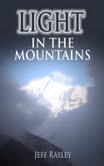 Jeff Rasley: Mountains of Meaning
I am pleased to interview a fellow Friend, Jeffery Rasley, about his experiences in the mountains of Nepal . Jeff Rasley is author of 6 books; his most recent book about Basa village is Light in the Mountains -- A Hoosier Quaker Finds Communal Enlightenment in Nepal. It is available on Amazon by clicking here.
Pam to Jeff: Jeff, can you describe what the conquest of mountains has meant to you personally?
Jeff to Pam: I would never say that I or anyone else "conquered" a mountain. Some climbers use that term, but I find it disrespectful of the mountain. I pray for the cooperation of the mountain and nature to allow me a wonderful experience on the mountain. I first went to the Himalayan Mountains in Nepal as an adventurer and mountain climber in 1995. After four Himalayan expeditions in five years I was forced to question what I was really doing in Nepal. In 1999 my climbing team barely escaped an avalanche which killed three Nepalese porters.Those men died carrying equipment for Western climbers. Was there any sense to make of the loss of three lives? Even though there was nothing I could have done to help those men, I wasplagued by guilt over their deaths. I resolved I would not go back to Nepal.There were other places to go adventuring, which would only put me in danger, not others. It was no longer safe to visit Nepal, anyway. A violent Maoist revolution against the King had broken out. The Army was shooting demonstrators in the streets of Katmandu, and Maoists were blowing up buildings and bombing buses.SARS had broken out in Asia.In June 2001 Crown Prince Dipendra shot and killed his parents and siblings as they sat down to dinner, and then shot himself. Political instability followed. Nepal was put on the State Department’s travel warning list. The allure of Nepal as a magical kingdom for Western adventurers was lost. But I did return in May 2003 to join in the Jubilee celebration of the 50th anniversary of the first recorded summit of Mt. Everest by Sir Edmund Hillary and Tenzing Norgay. My purpose was to research and write about the changes to Sherpa culture in the 50 years since Hillary and Norgay’s summit of Mt. Everest in 1953. My friend and translator, Hari Pudasaini, and I trekked through the Khumbu region of Nepal along the Everest Base Camp trail up to Base Camp at 18,000 feet. We met twenty members of the Hillary family who were making a pilgrimage along the Base Camp trail. Hari and I trekked with the Hillary group for a couple days. I learned much about Hillary’s devotion to the Sherpa people from Sir Edmund’s older sister, June, who was 86. After Ed Hillary became rich and world-famous, he devoted much of the rest of his life to philanthropy for the Sherpa people.He greatly admired the unique character of strength and Buddhist gentleness he found in the high mountain people of Nepal. With the assistance of Sherpas employed by his climbing team, he had become one of the most famous people of the 20th Century, and he gratefully returned many times to the Khumbu, not to climb but to direct development projects. Hillary’s philanthropic efforts brought schools, medical clinics, and eventually hydroelectric projects to the Sherpas.And the Sherpas loved him back. They called him “King of the Khumbu.” When Hillary spoke about climbing Mt. Everest, he always emphasized that the effort had been a partnership. Hillary had partnered with Tenzing Norgay to make the summit. And the climbing team had partnered with the Sherpas who supported the team as guides, cooks and porters. Hillary also considered his philanthropy efforts with the Sherpa people over the next fifty years a partnership.Hillary had gained much from the Sherpas – in part, his wealth and fame – but he had also gained as a human being from his exposure to their more grounded way of life.He became a more whole person by learning Sherpa ways.He responded by bringing to the Khumbu the benefits of Western education and medical care.As a result, young Sherpa’s minds have been opened in ways unknown to their parents and life expectancy has increased by ten years in the Khumbu. Pam to Jeff: What were you seeking when you went beyond the physical challenge of mountain climbing and deeper into interactions with the people of Nepal? What did you find? Jeff to Pam: The Jubilee experience had a profound effect on me. I felt the pull of Nepal again, but it was more than just the mountains, the culture, and the need for adventure. My encounter with the Hillary family and my interviews of Sherpas compelled me to think about what I could do for Nepal and then to act. I’m not rich or famous, like Hillary, and I don’t have the time or inclination to own and operate an expedition company, like Peter Hillary, Sir Edmund’s son. But I have friends, and so I thought I could help to make a meaningful connection between Nepal and friends from the West. And, I could write about what it all meant. I decided I would organize Himalayan expeditions by contracting direct with Nepali expedition companies. All of the economic benefit from the expedition would go to local people hired by the Nepal-based guiding company. One of the most expensive components of a Western guiding company’s charges is the cost of the Western guide, his wages, his transport to and from Nepal, and his living expenses. By not paying an American or European guide, I would be able to introduce friends to Nepal at a lower cost, with all of the wages going to Nepalese staff. Organizing fundraising projects for assistance to mountain villages was also part of the plan. I hoped the friends who would experience Nepal through the expeditions would want to support projects to benefit mountain villages. By organizing worthy philanthropic projects for Himalayan villages and introducing curious and sensitive friends from the West to the culture of Nepal, I hoped that would help to develop a healthy exchange between cultures. The third prong of my plan was to begin turning the journals I had kept into articles. If I could interpret the experiences I recorded in journal and photographs into a coherent essay, perhaps others would also find meaning beyond just the thrill of Himalayan adventures. My plan was put into action the year after the Jubilee with a 3-member group. We raised $1,000 for a water project in the Dolpo region of Nepal and brought over 65 pounds of children’s clothes and school supplies.My personal essay about the Jubilee and the affect on Sherpa culture of 50 years of exposure to Westerners was published by The Chysalis Journal. Each year thereafter I returned with a new group, raised money for a development project, and continued writing articles. In 2008 it all came together. I found what I had been seeking. It was a village called Basa in the land of the Rai. The Rai believe that everything, whether animate or inanimate, has spirit and deserves respect. They extend the founder of the Quaker movement George Fox’s “inner light” to everything in the world. Pam to Jeff: What values did you find in common with your friends in Nepal? In 2005 I met Niru Rai on the Internet. Niru owns a Himalayan outfitter company called Adventure GeoTreks. Niru’s company became the expedition company my mountaineering groups used as our local outfitters.Niru told me that when he was a child he went to school one day. He had to walk two hours on steep mountainous trails from his home village of Basa in the Solu region to the nearest school in the larger village of Sombare. What he learned from his one day of school was that he would rather get paid for walking long distances than to walk to school. He left his village to find work as a porter with an expedition company and never returned to school. He worked his way up from porter to kitchen boy to cook to sirdar (head guide) to company owner. But Niru’s heart remained in Basa village.He married a village girl, built a home in the village, and began hiring men from his village to staff his growing expedition company. And he did not forget that the children growing up in his village still had to walk two hours to the nearest school. The success of his company led to connections with Westerners, and in 2003 he convinced a French-Canadian NGO to supervise construction of a one-room schoolhouse in Basa on land Niru donated. The Canadians were the first “white people” to enter the village of Basa. I found a kindred soul in Niru. He cared deeply about giving Westerners a transformative experience in Nepal. And he hoped that some of his clients would be moved to do more for the people of Nepal than just spend money on a trek. As I came to know men from Basa who staffed our expeditions, I was deeply impressed with their sense of community and their exceptional care and concern for our group members. I wondered what the village was like that produced men who demonstrated such a high degree of the virtues of hard work and consideration for others. I had learned from Niru that there are eleven different sub-groups among the Rai people, each with its own local dialect. The deep valleys and high mountains of the Solu area, where most of the Rai live, have created separate pockets of people with different local languages and customs. Most Rai follow a religion described as a “middle way” borrowing from animism, Hinduism and Buddhism.Niru told me that the Rai around Basa believe in an ultimate Supreme Being unlike the other religions of the Indo-Tibetan Himalayas. There is a giant kapok tree outside of Basa village, which is sacred to the villagers and has become a place of worship.(Parallels to the Na'vi of James Cameron’s “Avatar” are inescapable.) Pam to Jeff: What have role have you been led to take in improving conditions in Basa Village? Jeff to Pam: Niru told me about the need of the Basa village school for physical plant improvements, educational materials and, most importantly, to hire two additional teachers so fourth and fifth grade classes could be added to the school program. When Niru asked whether I would consider organizing a trek to visit Basa in conjunction with developing a fundraising project for the school, I immediately agreed. In October 2008 as only the third group of “white people” to visit Basa my group found that the only teaching materials were chalkboards with no erasers and handmade posters; no books or tablets. There were a few rough benches for students to sit on; no desks or chairs.It pulled at my heartstrings to see such beautiful and eager children and to imagine what their classes must be like without any teaching materials or supplies other than the enthusiasm of their teachers and rudimentary posters hung by string on the patched walls of the little classroom. The floor of the building had a three inch crack running the width of the building wall to wall. The walls were bare plaster and the wood frames of the windows were rotting. Friends and our 2008 trekking group donated $6,500 to repair the school building, provide educational materials and more benches, create a play ground with a safety wall (there is a 500 foot drop off behind the school), provide a compost toilet, and, best of all, hire fourth and fifth grade teachers. All of the labor was supplied by the villagers and the two teachers are women from Basa. The creation of a special relationship with Basa village through the fundraising for the school and the experience of visiting the village impelled me to move beyond writing articles to produce my first book-length memoir. Bringing Progress to Paradise; What I Got from Giving to a Himalayan Village was published in 2010 by Conari Press. I have returned to Basa each year since 2008 with groups of friends. We have raised funds each year for improvements to the school, smokeless stoves for each home, a hydroelectric system for the whole village, and we are currently raising funds for a clean water project. Each year the villagers have turned out to welcome us with flower garlands and dancing. I had been lost on a Himalayan peak in 1999, but I had found meaning in relationship with a little mountain village in 2008. And, I have written three books to try to convey to others what I have learned about the happy communal way of life I have found in Basa.With friends, to receive the love and wisdom of Basa village and to give of our material wealth so the children would have the better lives their parents wished for them -- that was the answer I found. Donations can be made to the Basa Village Foundation USA Inc. for the water project by contacting Jeff Rasley at [email protected], through the Foundation's website at http://basavillagefoundationusa.org/, or sending checks to Indianapolis First Friends, 3030 Kessler Blvd. E. Dr., Indianapolis, IN 46220 with “First Friends Basa Village Project” as payee.
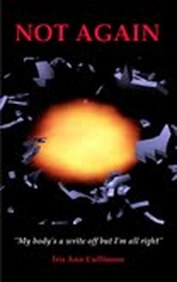 Richard Von Hippel has written a memoir with a woman whose very difficult life experiences--and fight for recovery-- he has found singularly inspirational. Iris Ann Cullimore is the subject and co-author of Not again! Here Richard shares some of the back story of their inspirational collaborative memoir: Pam to Richard: Was there a specific moment when you knew you would write a memoir with Iris? Please describe what that was like. Richard to Pam: Like most things in my life, writing a memoir with Iris was more of an accidental/ coincidental process. I’d only ever met one other person in my entire life with the raw courage and determination of Iris and I’d thought for a long time that her story ‘deserved’ to be told, if only for its inspirational value. But I never thought for a moment that I would be the one to help her write it, until a few weeks after I received a phone call ‘out of the blue’. The caller was an old school friend of mine who’d been trying to catch up with me for 47 years. He’d finally caught up with me on the exact anniversary of the last time we’d seen each other.He still met regularly with several of our old classmates and our subsequent emails revealed he worked as a freelance journalist for an Irish newspaper in Philadelphia, as well as being a poet and Editor. Strangely, during that very first phone call and in all the subsequent emails he kept remarking on how well everyone remembered my writing from school and how convinced he was I ‘had a book in me’, which I didn’t take seriously, at first. Pam to Richard: How did you know you were going to do it? Richard to Pam: The more I thought on my old school friend’s claims that I could write, the more I realised that if anyone was going to step forward and write Iris’s memoir, with her, it would have to be me – and the rest is history! Pam to Richard: What kept you working on it when the going got rough? Richard to Pam: There is nothing related to Iris that is not a challenge! Disaster seems to walk one close step behind her – hence the title Not Again. However she is something of an enigma, insofar as that anyone who ever works with her never quits. Perhaps it is the admiration we all have for her fighting spirit. Perhaps she’s just been ‘sent’ to test us all! Whatever her ‘secret weapon’ no one of any worth ever gives up on her. Even the hospital Consultants and Specialists who have treated her, along with their Secretaries become such good friends she can bypass the system and ring them direct – there is no referral and no waiting –if they can’t do it, they always know someone who can. Pam to Richard: You have had several roles in bringing Not Again! to publication. How did you balance the roles of healer, therapist and ghost writer/ storyteller to bring Iris' story to us in the form of a book?
Richard to Pam: Perhaps the easiest, though not the most enlightening answer to this question is that Iris is just Iris, treating her is just treating her, and writing her story is just writing her story, in the same way that night and day or the Seasons are what they are. You just dress differently and get on with it, without thinking about balance. All my stroke survivors are treated in their own home, I never charge any stroke survivor full price and I never set a time limit for their treatment. If they have emotional issues, we address them. If they just want a laugh, a joke and a cup of coffee, we have one. Apart from the fact that Iris was one of my first case studies in stroke treatment, and I’ve treated her free of charge ever since, all I did was add a Dictaphone to her treatments. Then, apart from getting her to clarify events, places, people and situations I just let her tell her story, over many days and many cups of coffee. The only real problems we had were that she often ‘got ahead of herself’ - in her own words - and then I had to re-write the affected Chapters. But when you consider how often I’ve had to repair her, after yet another mishap, I suppose that’s just par for the course! Pam to Richard: The instinct of curiosity that drives us to peer into some of the most devastating moments of another person's life. . . the reader's motivation: does your experience tell you that it's a positive thing, a negative thing? Richard to Pam: I believe that knowing the realities of life, through other people’s experiences is an essential part of eventually attaining true civilisation, as a species. All aspects of today’s society have become so sanitised that nothing outside our own, personal lives is ‘real’, any more. When we lived in small and ‘nosey’ communities we saw grief, pain, joy and celebration on an intimate level, and so we learned to feel and empathise. Today, our lives are more remote from each other than if we lived in another dimension, or galaxy. Thus, the memoirs of ‘ordinary’ people are essential, if we are to fully realise what goes on in the world we live in, which is the only way to change. Pam to Richard: Clearly you are a very sensitive, ethical person yourself. What personal values do you apply to the delicate process of exposing these vulnerable memories? Richard to Pam: I must admit that I was surprised by some of what Iris was prepared to publicly reveal, but apart from asking her “are you sure you want to make this public?” I never questioned her, or her motives. After all, it will always be her story, and it will always be her right to tell it how she wants, for whatever reason she wants to tell it. Pam to Richard: What in your life experience led you to believe you were the person to write Iris' memoir? Richard to Pam: Being a therapist, and not being a woman! Before I even began to learn the psychological/emotional therapies I fully understood the principle that: “We are, all of us, unique individuals, fashioned in our own way, by our own unique circumstances, experienced in their own unique way”. That, together with my not being a woman meant I had no way of transferring my emotions to her experiences, which essentially meant I couldn’t put my own ‘spin’ on her story. This is why NOT AGAIN is exclusively Iris, through and through. Only the language with which events are recounted comes from outside of Iris. Pam to Richard: What do you intend this memoir to accomplish in the minds or hearts of readers? Richard to Pam: My greatest hope is that by showing the reader the true strength and resilience of the human spirit, as demonstrated by Iris, it will also give them the strength and courage to rise above their own adversity, and to fight even harder. Click here for Richard's website: http://memoirsonly.com/
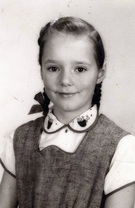 Shirley Hershey Showalter is writing a book called Blush: Mennonite Girl in a Glittering World.
Pam: Shirley, What is critical for your readers to know about you and your life before they pick up your book? Shirley: I'm a farm girl who grew up "plain" and has had a love-hate relationship with required plainness while admiring genuine humility all my life. My ideal reader has an interest in Mennonites (and probably Amish also). She wants to know what a Mennonite farm childhood is like. She might be attracted to the black and white picture with rosy cheeks and be curious about why the title is "Blush." Pam: There is something about memoir that puts us at double-jeopardy. We not only reveal ourselves through our craft, we put our lives and deepest joys and fears on display. Why did you do it? Shirley: Why write memoir? I am doing it for the same reason I spent most of my career as an educator. To know myself better and to help others do the same. Blushing comes from having a gap between our outward image and our inward feelings. I want to explore when and how that gap arose in my life and how it closed. My second reason for writing is to leave a legacy of reflection on values for the sake of my grandchildren and others who come after. I also want to inspire others to write their own memoir, whether or not they publish it. Pam: Tell us about the sorting process: identifying the pivotal memories. How did you know when you had found yours? What distinguished them? Shiley: This is a great question, Pam. For me, a pivotal memory is one that changed me and/or others. It also has touched me deeply at a feeling level, whether that feeling is fear, love, loneliness, determination, or sadness. For this reason, a pivotal memory is also a self-contained story with a beginning, middle, and end. Pam: A memoir has within it a "little book" of our life memories, and a "larger book" of our life themes. Can you discuss how you use the little book of memories to support the larger themes of your work? Shirley: I like this description. Thomas Larson speaks of the me-then and the me-now. This is another way in which a good memoir layers meaning, time, and perspective. One of the hardest things for me to do right now is to move between these two. It's hard enough to establish a chronological chronicle of pivotal stories as accurately as possible. Then one has to read the whole chronicle through the lens of theme, purpose, higher and more universal values. It helps to make note of possible themes as you go. For me, choosing a title commits me to finding a way to unfold meaning about my rosy cheeks, my propensity to blush, my desire to be loved and recognized, and my heritage as a Mennonite farm girl. Siirley: Thanks for inviting me to be your guest, Pam Pam: You're most welcome, Shirley. I aplogize for the delay in posting your blog entry. I have just been discharged the hospital following a stroke. I promise never to do it again, if I can help it! You can have the pleasure of following Shirley's progress writing and publishing her book on her website at: www.shirleyshowalter.com . She also shares vast stores of useful information about writing memoirs on her blog.
 The purpose of the memoir is to tell a true story about events that actually happened; memoir is cathartic, transormational. . .and best of all, memoir is non-fiction. People are drawn to these stories (I know I am!) because someone has lived them out. Perhaps we want to learn what someone else has learned, to live in someone else’s skin, or to feel something we haven’t felt before.
Memoir is a risky business for the author. We face the same fears and challenges all artists face when revealing their work to the world. Factor in the additional risk of personal rejection: because we are being transparent about the events of our lives, some members of our audience will never approve of, nor appreciate what we have done. Many writers brave enough to publish would run shrieking from such a lifting of the veil. So there must be some compelling reason authors decide to share their experiences in a memoir. I think it is because when we come down to it, those who write memoir believe that truth is the most important, the most powerful gift we have to share with the world.
At times, someone claims they have written a memoir that is later found to have no correspondence with factual events. Memoirists get peeved by these fake memoirs, because once the facts are discovered, the deception practiced by the “wanna-be” reflects poorly on the genre and casts all of us under suspicion.
While journalists traditionally have been trained to present “just the facts,” like so many kleenexes folded into a box, a memoirist also wants to tell a story that will interest the reader. There are a number of tools at hand to create and maintain the reader’s interest. Writers of memoir are aware that many of the techniques of fiction can be applied to memoir. Creative non-fiction is still non-fiction, but told in a way that allows the reader to slip his feet into the author’s shoes.
This blog is written with the objectives of the memoir-writer in mind. I will be interviewing memoirists about their writing experiences. I will sometimes interview fiction writers on this blog, with a focus on how they bring their own memories into their work, and give them an opportunity to demonstrate some fiction techniques that can enhance memoir.
|


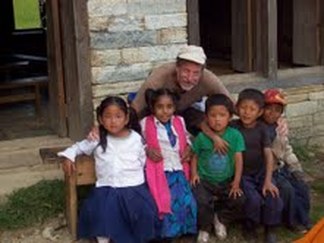


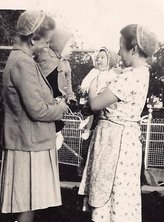

 RSS Feed
RSS Feed